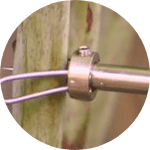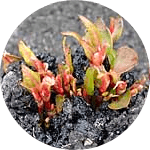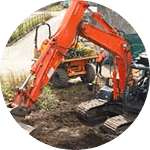Hottentot Fig Removal & Control

The overview
Common Name: Hottentot Fig
Latin name: Carpobrotus edulis
In Detail
- The plant is native to South Africa and was introduced to the UK as an ornamental plant in the 17th Century.
- Spread of the plant is mainly through discarded garden material. Once established the plant forms dense mats of growth, covering large areas and smothering out native species.
- The plant can cause changes in the soil pH and increases available nitrogen and organic matter.
- Erosion can occur where the species has been controlled without the successful revegetation of delicate habitats.
Images supplied by RPS Group PLC
Who we help
We have a long track record of managing some of the most complex sites in the country and have worked with the Environment Agency on several large flood alleviation projects, as well as providing advice to the majority of house builders and developers in the UK.
Click here to view who we help







Identification
- Spreading succulent, the green leaves have a distinctive triangular cross section and grow in pairs to 5-16cm in length.
- Flowers are yellow in early summer, fading to pink later in the season. Flowers open in the afternoon.
- Fig shaped reddish fruits are produced but do not ripen in the UK
- The plant prefers warmer climates and poor sandy soils.
What’s the problem?
- Hottentot fig is non-native species which can quickly out compete native plants particularly in coastal cliff and dune habitats.
- The species is a particular problem in mild, coastal areas in the south west of the country.
- The main mode of spread is vegetative.
What are the Legal Implications? *England
- Listed as a Schedule 9 species under the Wildlife and Countryside Act 1981,
- It is an offence to plant or allow Hottentot fig to spread onto adjacent land and into the wild,
- Offences under the Wildlife and Countryside Act 1981 can result in possible fines and prison sentences.
- It is not an offence to have Hottentot fig on your land and you do not need to notify anyone on its presence.
- Soils containing the plant are classified as controlled waste and should be disposed of at licensed landfill.
Control Methods
Mechanical Control
- Infestations can be removed mechanically throughout the year, ensuring that all stem nodes are removed as if left these can regenerate forming new plants.
- Waste materials containing the Hottentot fig are considered ‘controlled’ waste and must be disposed of appropriately.
Chemical Control
- Herbicide application can by successful at reducing the spread of the plant, but may be impractical due to the location.
- Applications of herbicide should be made when the plant is actively growing, multiple applications may be required.
When treating large areas, a suitable grass and forb mix should be sown to prevent bare ground and colonisation of other unwanted species.
If you have concerns over Hottentot fig species on your land, if you are unsure of your legal responsibilities, or, if you would like a quotation for control, please contact one of our specialist surveyors. Treatment costs start at £380.00 + VAT.

Where we have worked
We operate nationwide with a Rapid Response Team on standby 7 days a week, to deal with the most urgent client enquiries.
We’re a dedicated team of professionals who share a great deal of experience. We invest heavily in the continual training of all our employees, ensuring you always have a highly qualified team working on your project with the latest industry accreditations.
Our process

1. Identify
Our first step is to identify if you have an invasive plant. For a quick ID, you can send us some photos. Alternatively, we can carry out a full site survey to confirm the extent of the infestation.

2. Solution
We will provide a range of treatment options individually tailored depending on your site requirements.

3. Quote
A detailed breakdown of costs for each phase of treatment will be provided, including on-going monitoring programmes with insurance backed guarantees.

4. Removal
Our experienced and professional in-house teams will carry out the treatment to the highest of standards to achieve full eradication. All works are carried out in accordance with the INNSA Code of Practice.

5. Treatment
A range of treatment solutions are available, from in-situ herbicide application to excavation and removal or burial. All carried out in-house by our experienced team.

